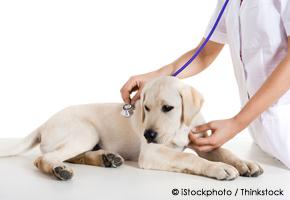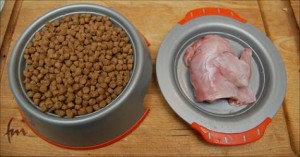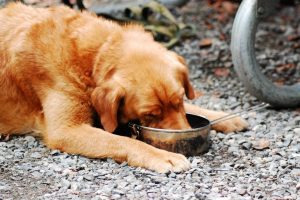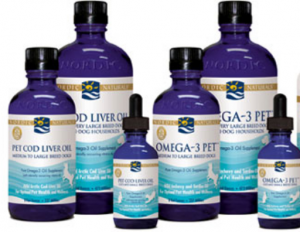
By Dr. Becker
Recently the American Animal Hospital Association (AAHA) added a fifth ‘vital health assessment’ for veterinarians in determining the health status of their cat and dog patients.
The four existing assessments are: temperature, cardio function, respiratory health, and pain.
The new “5th Vital Assessment”1 is nutrition.
Per Michael Cavanaugh, DVM, and executor director of the AAHA:
“Incorporating nutritional assessment into the routine examination protocol for every patient is important for maintaining optimal health, as well as their response to disease and injury.
The goal of the new guidelines is to provide a framework for the veterinary practice team to help make nutritional assessments and recommendations for their patients.”
Integrative and holistically-oriented vets have always done nutritional assessments on our patients.
In fact, I view species-appropriate nutrition as the first and most influential of the three pillars of health – the other two pillars being a sound, resilient body and a balanced, functional immune system.
And while I applaud the traditional veterinary community’s addition of a nutritional assessment in determining the well-being of dogs and cats, I’m a little concerned with where this initiative could be headed.
Here is how the AAHA introduced their new “5th Vital Assessment” initiative in October 20102:
DENVER — Nutrition is integral to optimal pet care. However, the American Animal Hospital Association (AAHA) found through its Compliance Study that only seven percent of pets that could benefit from a therapeutic food were actually on such a regimen.
The compliance discrepancy along with the many factors considered in assessing the nutritional needs of a healthy dog or cat, as well as the pet with one or more medical conditions, led to the development the AAHA Nutritional Assessment Guidelines.
The phrase ‘therapeutic food’ gives me pause, especially when I see that a major manufacturer of ‘therapeutic’ pet food has provided an educational grant to print the AAHA Nutritional Assessment Guidelines for Dogs and Cats3 in several languages.
Coming Soon to a Veterinarian Near You …
… a big push to switch your pet to a ‘therapeutic’ dog or cat food.
My discomfort with the therapeutic food angle grew when I came across a PetfoodIndustry.com article in January of this year.
According to the article, the same pet food manufacturer who provided an educational grant to the AAHA “… will make regular visits to more than 22,000 veterinary hospitals and clinics to help build support for and implement nutritional recommendations as the ‘5th Vital Assessment’ in pet healthcare.”
To accomplish this the pet food company plans, among other things, to add sales staff to call more frequently on vet offices across the country in order to sell more therapeutic pet foods.
Then I came across another PetfoodIndustry.com news item, also from January, announcing that a pet health insurance provider is adding coverage for therapeutic pet food.
According to the article, “… coverage now includes half the cost of therapeutic pet foods purchased through a veterinarian to assist in care of a pet for two months.”
‘Therapeutic’ Pet Food Ingredients Revealed
The following is a list of the first five ingredients in some of the therapeutic pet foods you may hear a sales pitch for the next time you take your pet to the vet for a wellness exam.
A can of cat food marketed as capable of improving feline bladder health:
- Pork By-Products
- Water
- Pork Liver
- Chicken
- Rice
A bag of kibble advertised as good for feline gastrointestinal health:
- Chicken By-Product Meal
- Brewers Rice
- Corn Gluten Meal
- Whole Grain Corn
- Pork Fat
A can of dog food to improve cardiac health in senior dogs:
- Water
- Corn Flour
- Pork Liver
- Rice Flour
- Beef By-Products
Dry dog food marketed for canine renal health:
- Brewers Rice
- Pork Fat
- Dried Egg Product
- Flaxseed
- Corn Gluten Meal
Regular readers here will immediately recognize the remarkably inferior, species inappropriate ingredients in these pet foods.
For the uninitiated:
- By-products are what are left after all the good stuff is harvested for the human food industry. Beaks, feet, feathers, wattles and combs are chicken by-products. There could be something beneficial thrown in, like the heart or gizzard, but because there’s such potential for undesirable pieces and parts in ‘by-products,’ it’s better to avoid them altogether.
- Corn in any form (including corn gluten meal, whole grain corn, corn flour, etc.) is an extremely allergenic food and difficult to digest. It’s also one of the three crops most highly contaminated with aflatoxins.
- Brewers rice is a low quality ingredient that also happens to be a by-product. In addition, it’s a grain. Grains are not species-appropriate nutrition for carnivores.
Read here for the secret to cracking the code on your dog’s (or cat’s) pet food label.
Just Say No to ‘Therapeutic’ Pet Foods
Unfortunately, veterinary students don’t learn much about nutrition in their coursework. They graduate, go into practice, and become easy targets for pet food companies eager to fill their reception areas and storage closets with inferior quality ‘prescription’ diets for dogs and cats.
Now that the AAHA has added nutrition as the 5th vital assessment of a pet’s health, I think many pet owners will be hearing more about diets during vet visits. I also suspect many of these conversations will end with a recommendation to buy a ‘prescription’ (therapeutic) pet food to take home with you.
I absolutely do not recommend the extremely low quality, species-inappropriate pet food formulas being sold through vet practices as ‘therapeutic.’
I encourage my Natural Pet clients and all of you reading here to learn everything you can about the vital importance of biologically appropriate, high quality nutrition to the health and longevity of your pet.
I believe the more informed pet parents are about the type of food dogs and cats need to thrive, the less vulnerable they’ll be to a sales pitch for low quality pet food – even when it’s recommended by a veterinarian.
References:





